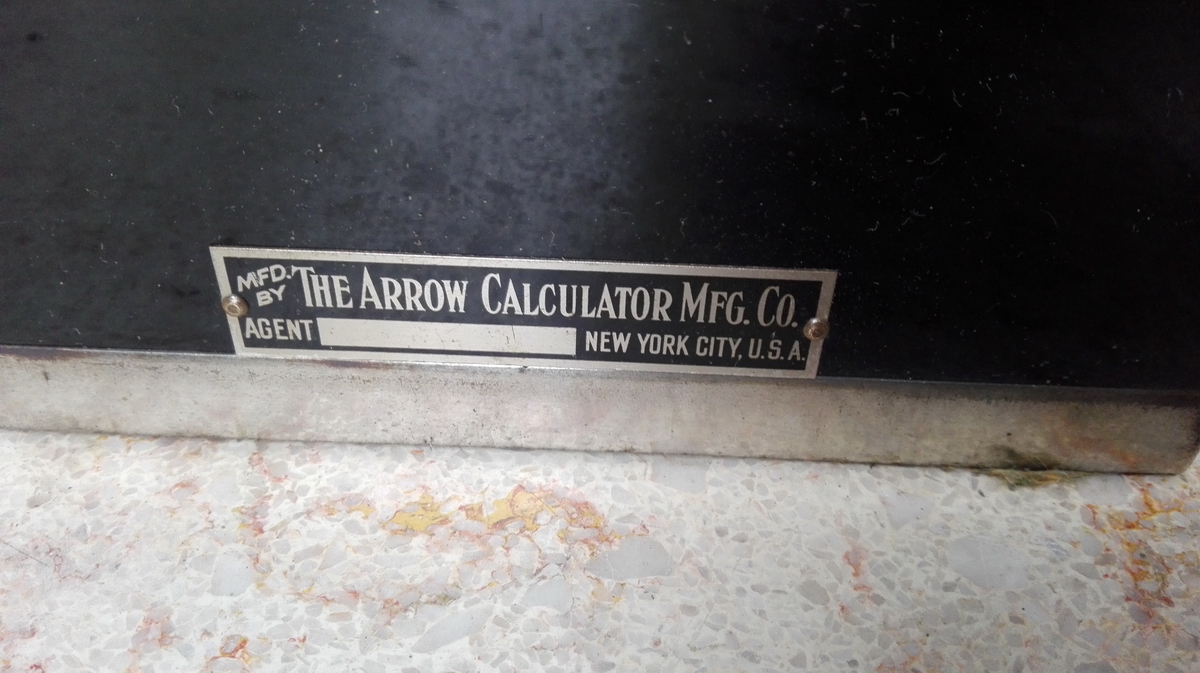Arrow calculator
Very little information exists with respect to this machine. It came from the collection of Thomas Russo, and is featured in his book "antique office machines - 600 years of calculating devices". The text in there mentions essentially what is on the typeplate on the back of the machine - manufactured by "The Arrow Calculator Mfg. Co.", from N.Y. City, U.S.A. - whoever they may have been. At first sight, the machine resembles an Odhner Arithmos (it also dates from the same timeframe, early 1920's), so I thought it might be rebranded import, but the dimensions are slightly different, and when the machine is opened up, it is quite obvious that also the details of the mechanism are quite different from any other brand of machine that I know of. All the screws are imperial too. I can't but conclude that indeed, a small company other than Marchant decided to build pinwheel machines in the US. Nothing can apparently be found today about "The Arrow Calculator Mfg. Co.". According to Business Equipment Topics (1920) v48, p 347, the sales manager was Alfred Schurig, an "experienced European calculator salesman", and the machine was worked on for two years by a "staff of first-class engineers, experienced in the adding and calculating machine field". Known serial numbers are 1154, 1204, 1192 and this one, 1176. There is only one Alfred W. Schurig in New York around 1920, who is by then 60 years old, and has his occupation listed as "clerk". In earlier censuses he is either a government employee or a clerk. He dies on Sept. 14 1922. When I received the machine from the auction house, it was, excuse the word, filthy. I don't think it had ever been cleaned, which seemed to be a feature of most of the machines in the Russo collection. It was dirty and a bit rusty, with the layer of nickel flaking off in certain spots. The front cover of the carriage had received a nasty bump, and the fingerholds were both loose.
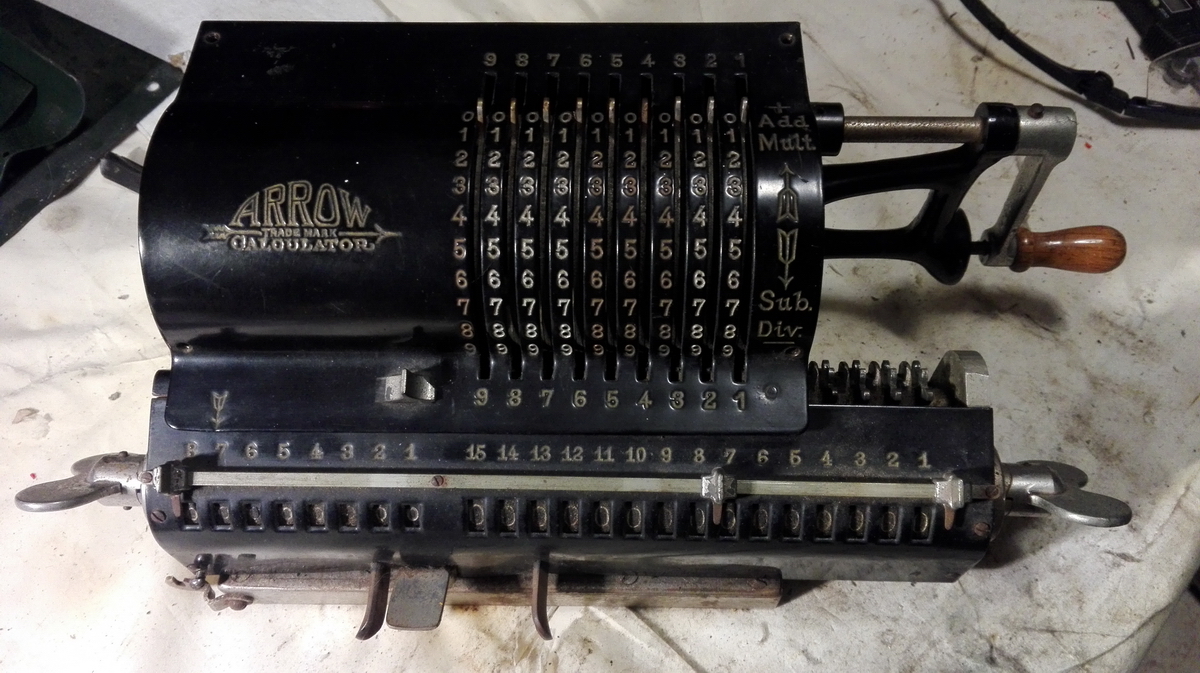
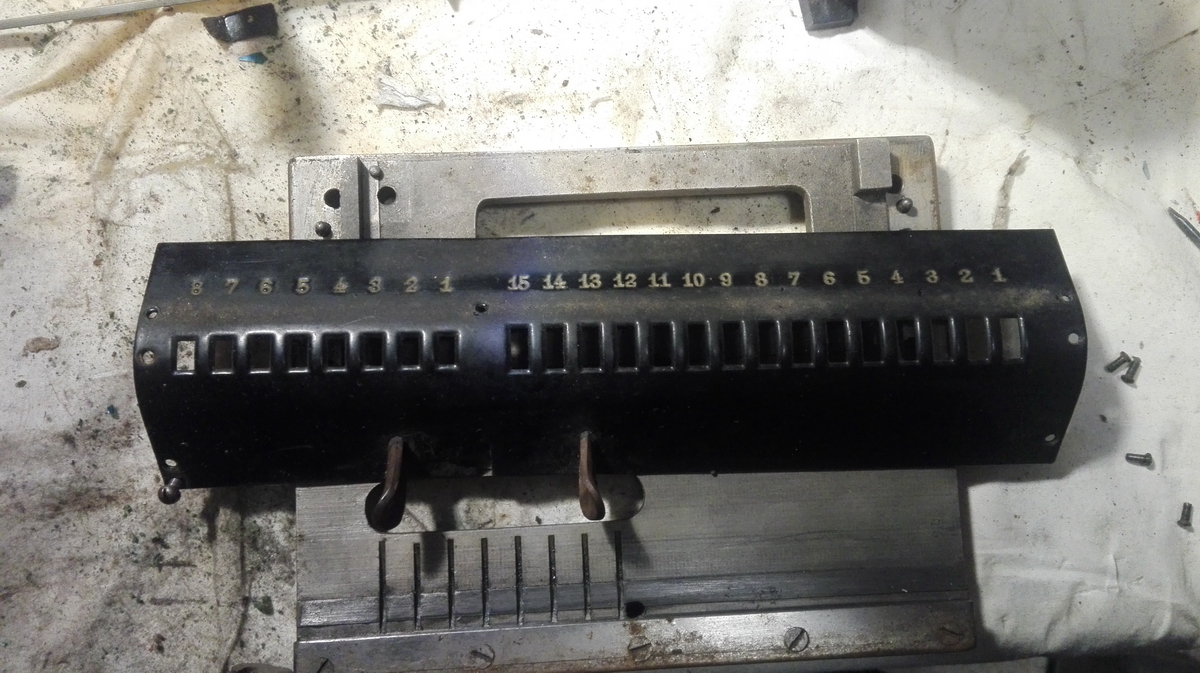
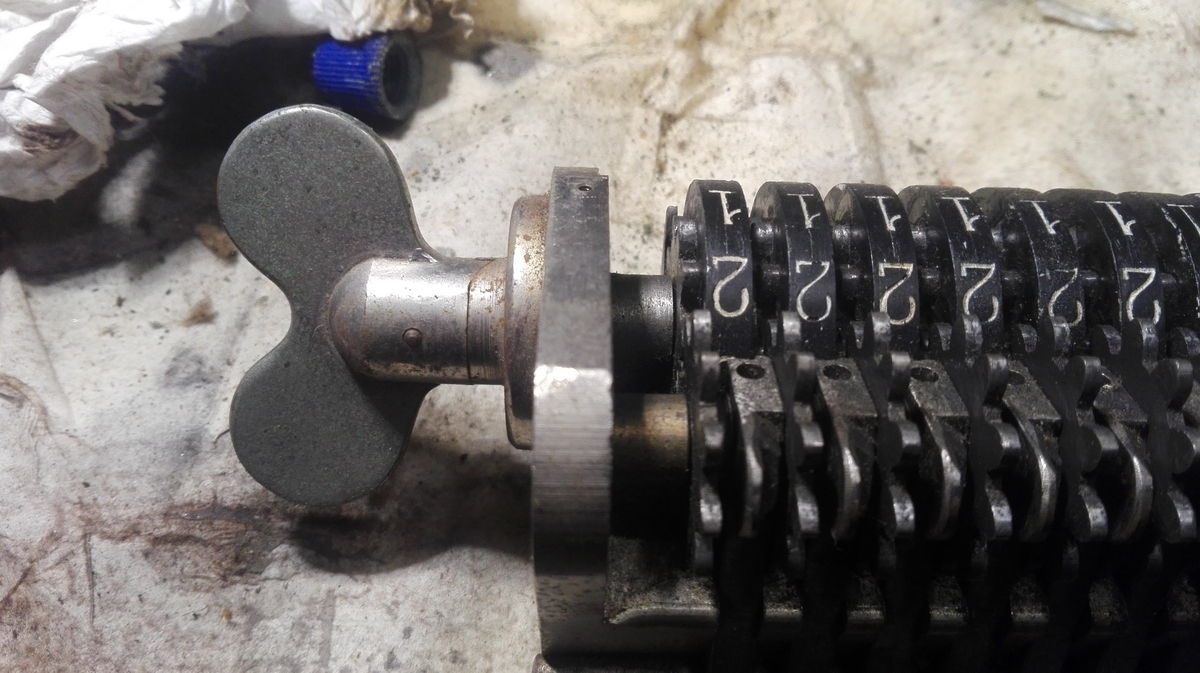
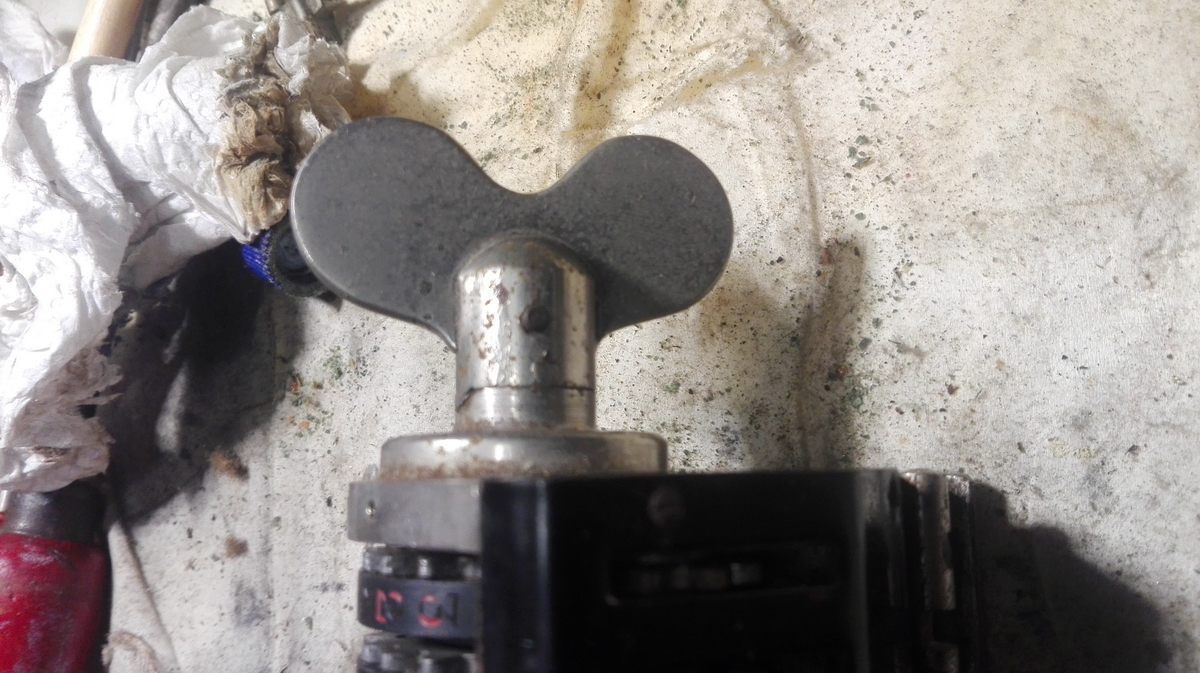
The pinwheels appear to be made from an odd alloy with a very pale yellow colour. It could me monel or a kind of aluminium bronze, I haven't analysed it, but doesn't look like regular brass.
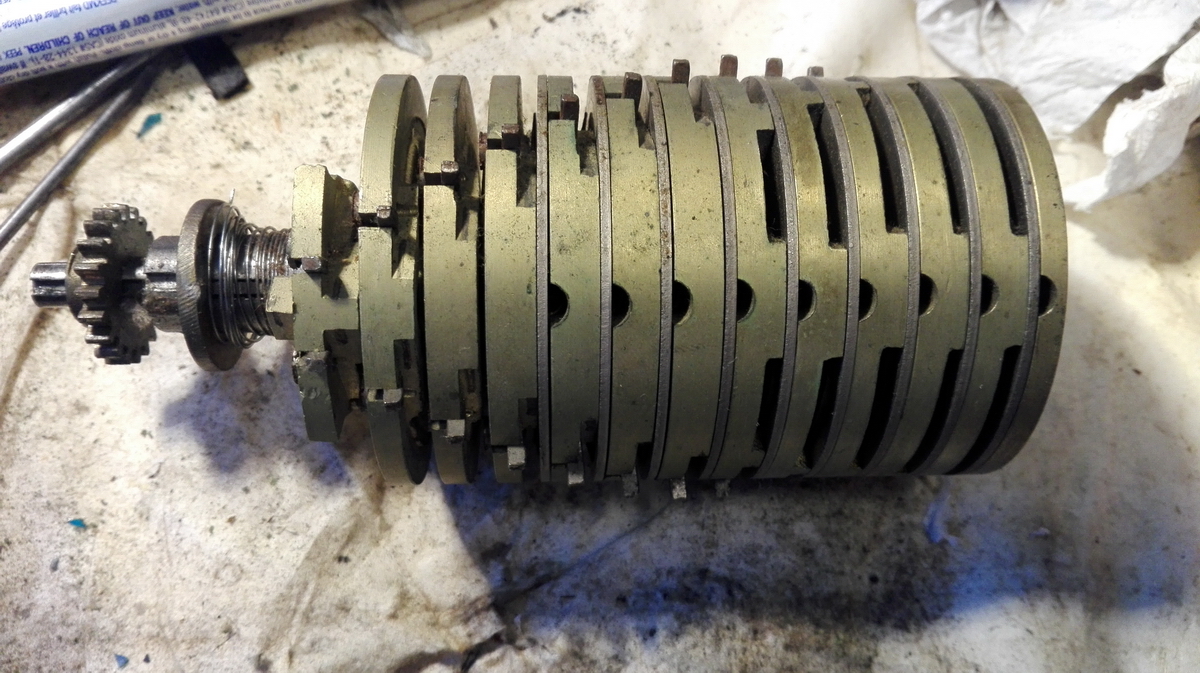
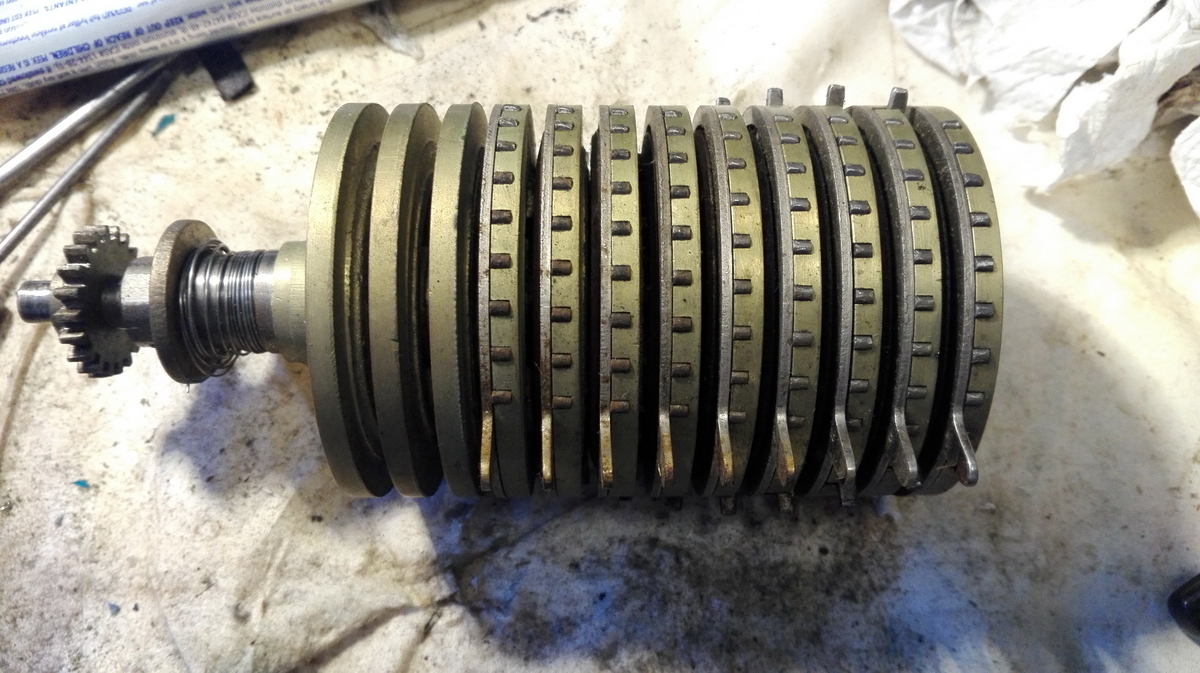
In the above picture, the rightmost three pinwheels have already been cleaned.
There is a bronze arm fitted to the baseplate, which curves gracefully over the left end of the pinwheel cylinder, in order to hold the mechanism for locking the pins in place. This consists of a spring-loaded collar on the axle of the pinwheel which is levered to the right for unlocking. When the crank handle is pulled out, a system of levers lets go of this collar, it springs to the left, and the pins are locked. This action can be counteracted by the fulcrum at the end of the curved bronze stand, which is operated by the zeroing knob at the front left of the top plate, which then unlocks the pins again for zeroing. There is a mechanism with a slotted disk at the bottom left, similar to the system used by Brunsviga, in order to prevent the crank from turning if the carriage is not in a rest position, and additionally prevents the carriage from being moved if the crank is not in its rest position. The limits for the carriage are determined by an enormous round slotted bolt sticking through the bottom plate in an elongated slot. What is very annoying fro disassembly is that the bell and the bell hammer stick way out past the end of the carriage, so that the main body of the machine needs to be taken off the baseplate before the carriage can be slid out. Luckily the number of possible timing issues remains limited in a simple machine like this. The machine was entirely disassembled into its main components for cleaning and lubrication, although the carriage was not taken apart, and neither was the pinwheel cylinder. They were cleaned and polished as they were. This is a picture of the puzzle as it was right before ...
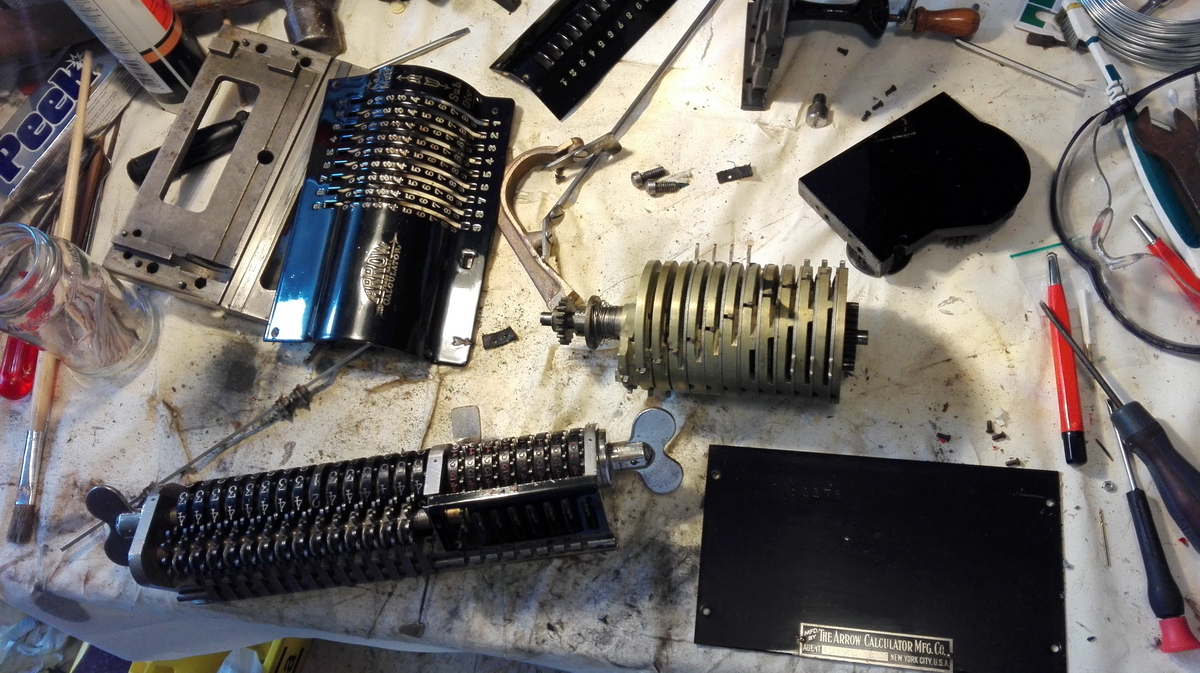
...and during reassembly.
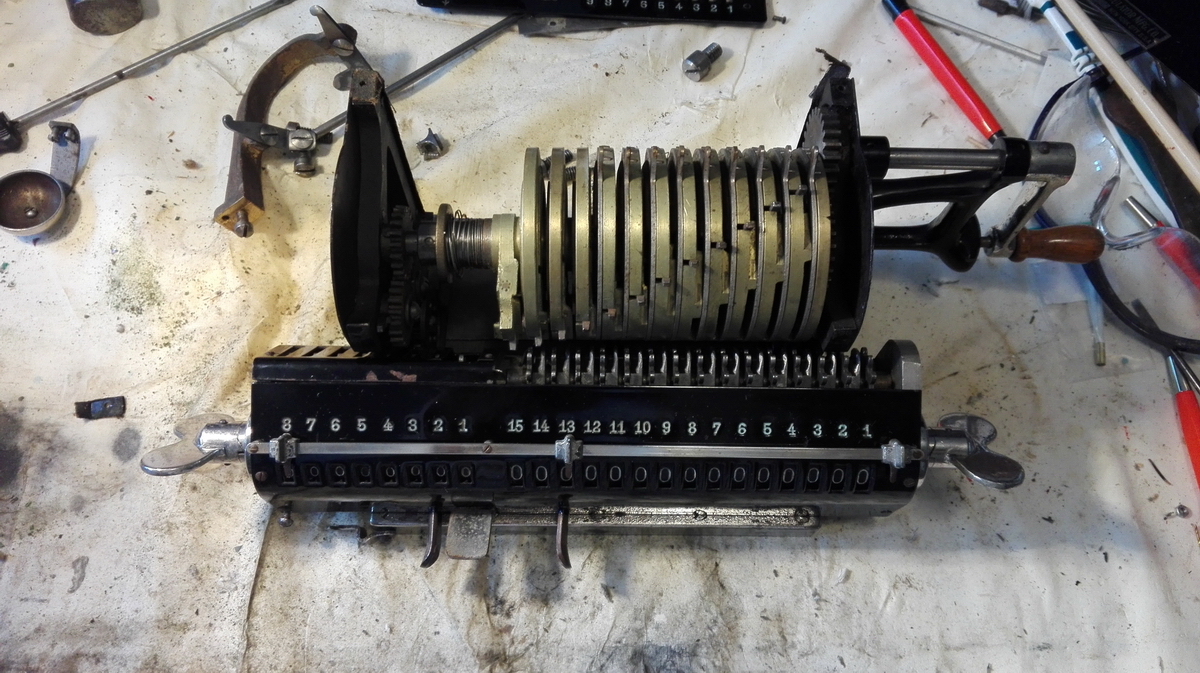
The tens' carry needed some exercise until all the pins were loose enough to actually make it work over the entire length of the pinwheel cylinder. This is also a strange thing with this machine - the tens' carry only works over 13 positions, so if you put the carriage to the right and subtract 1 from an empty register, the leftmost two digits in the carriage remain at 0, and the overflow bell does not ring. The bottom of the machine is covered in a kind of green rubberized sackcloth, that I had to take off to get at the screws for disassembly, and that I then dutifully glued back into place.
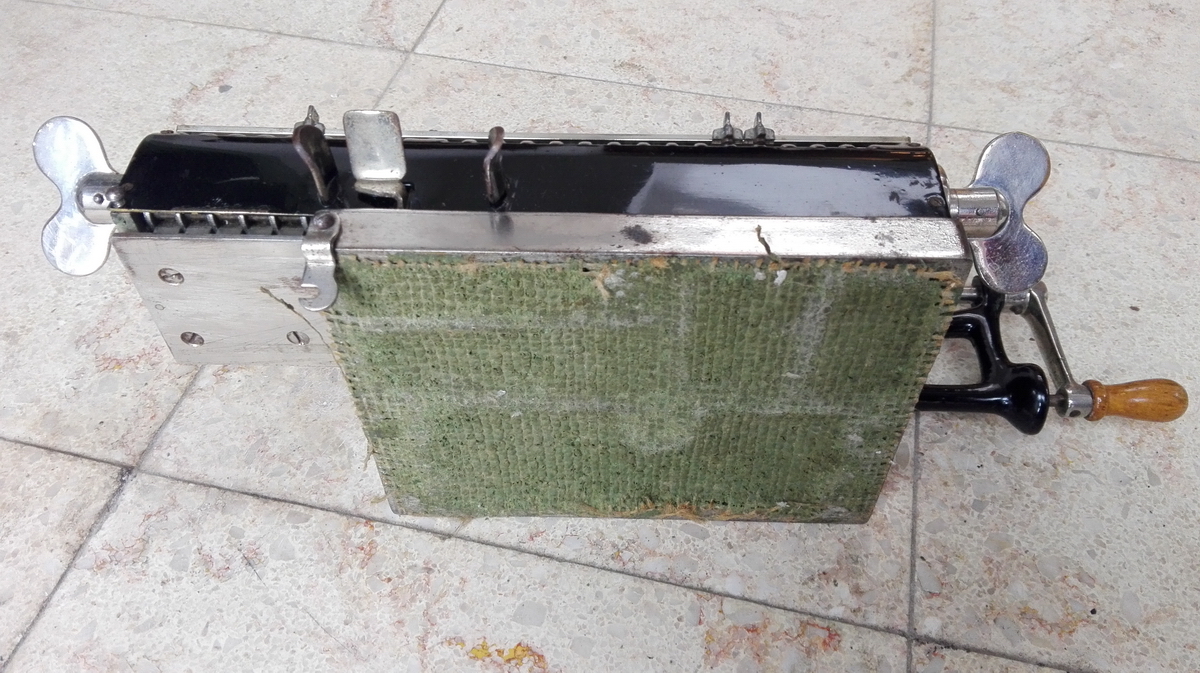
After a bit of cleaning and polishing, it is quite presentable, but by all means judge for yourself from the pictures.
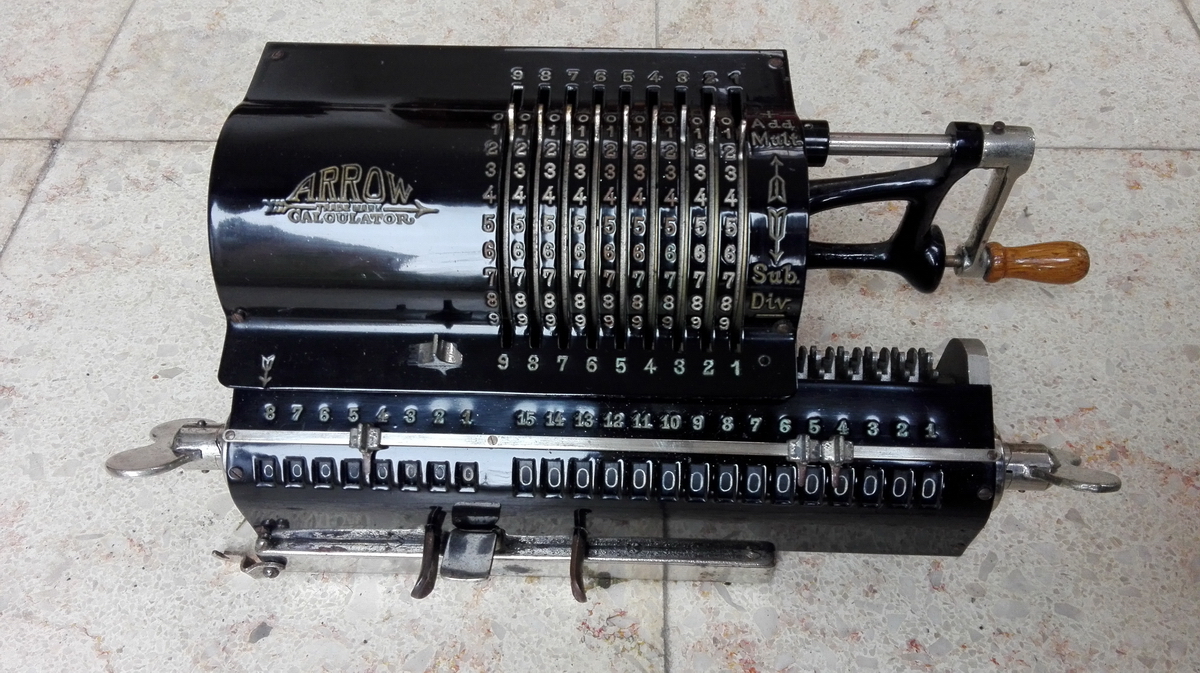
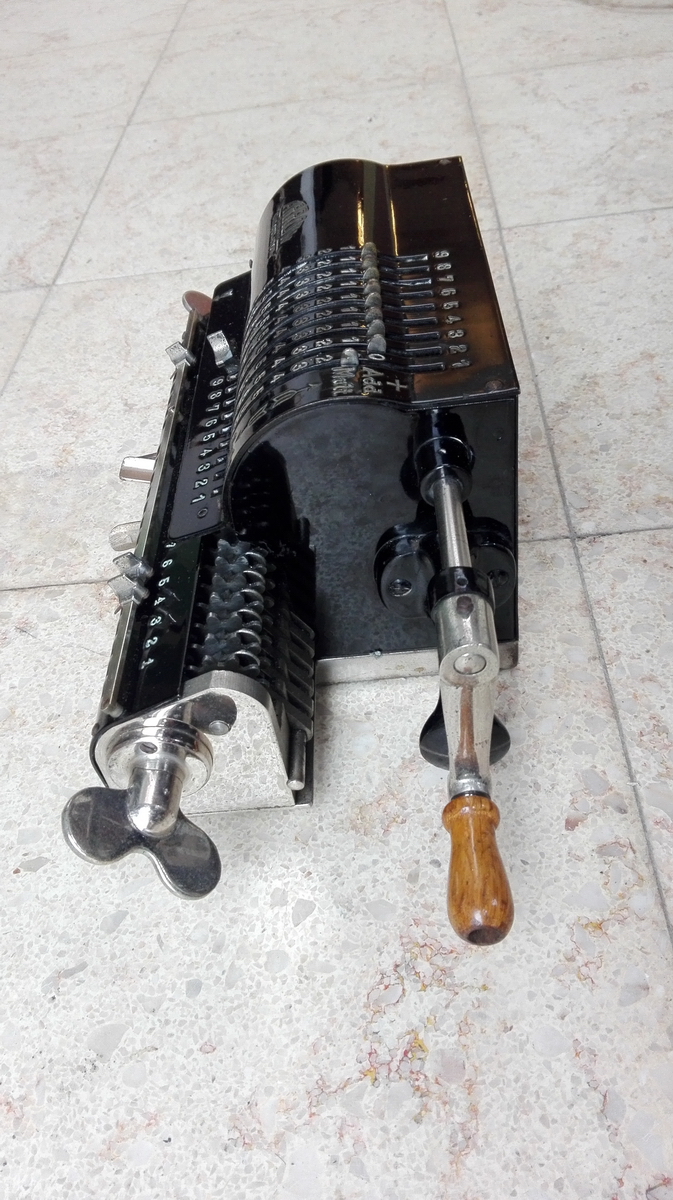
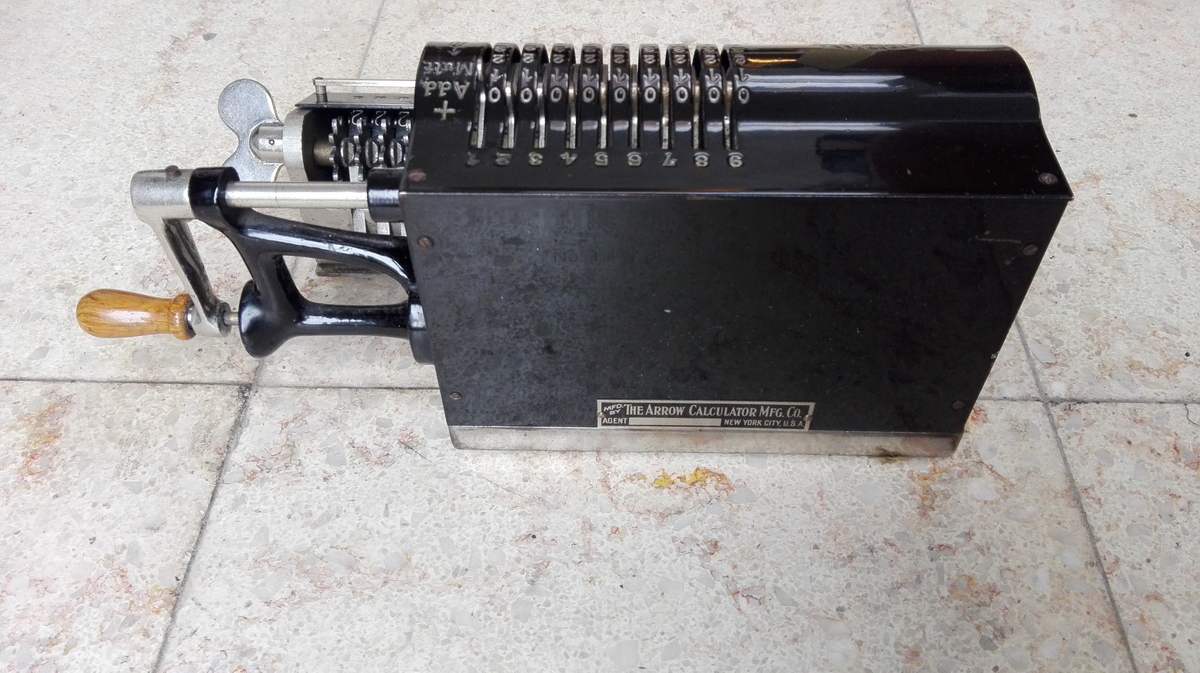
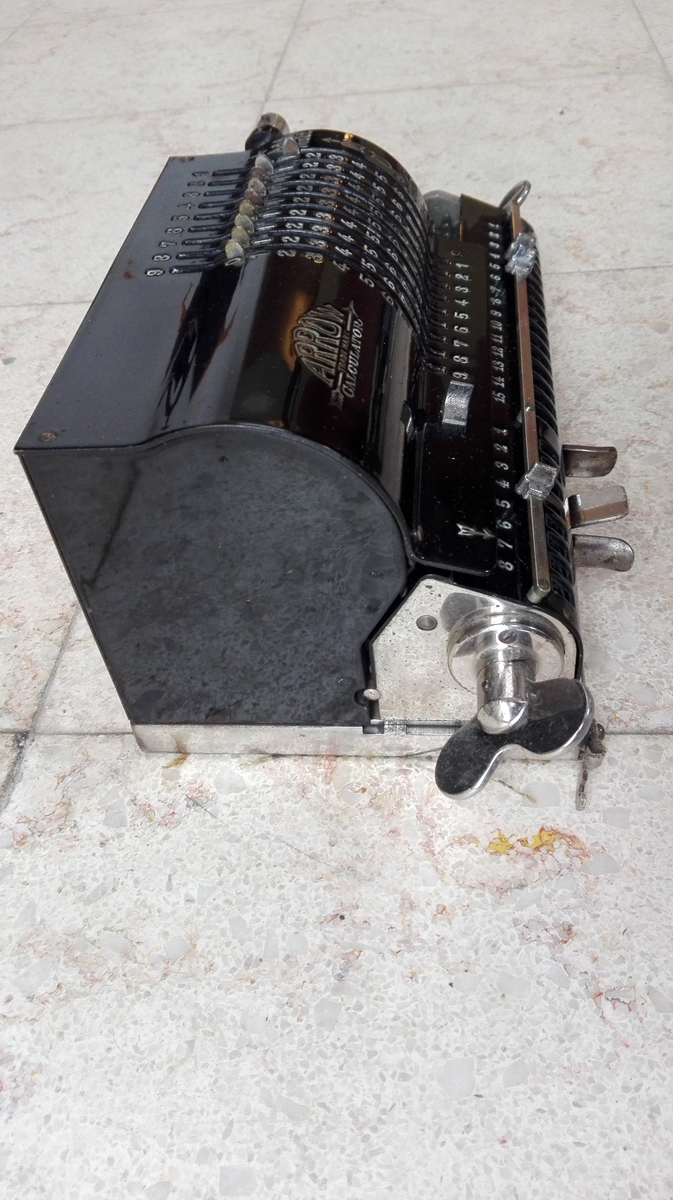
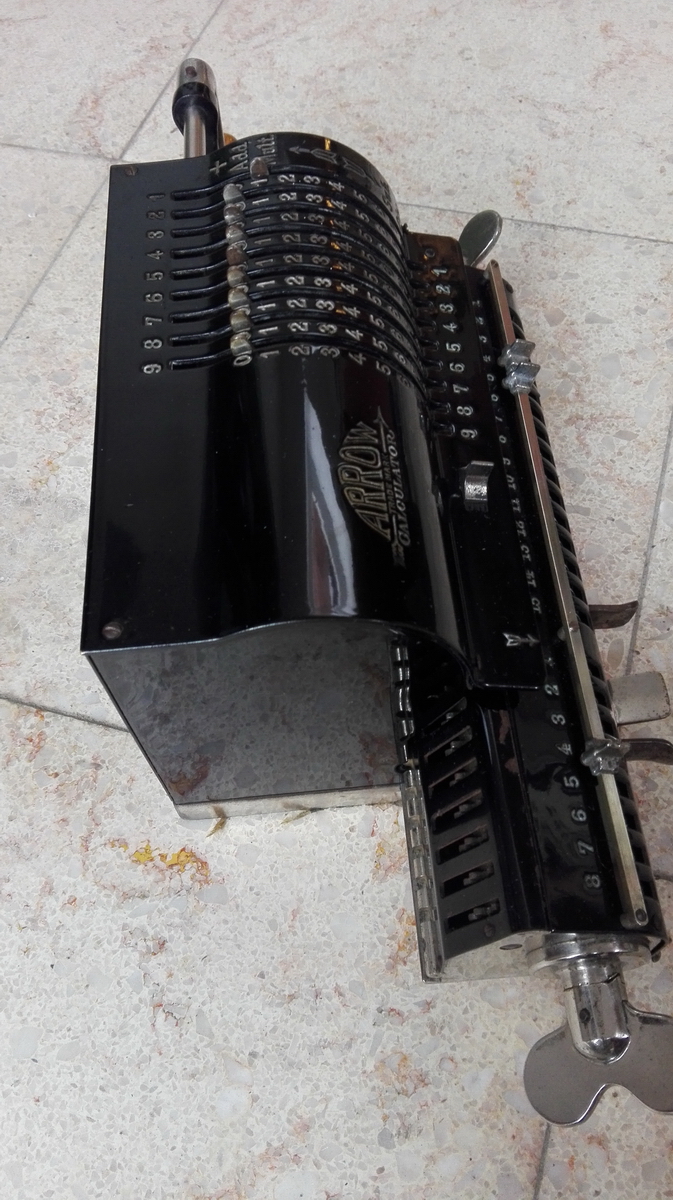
The serial number:
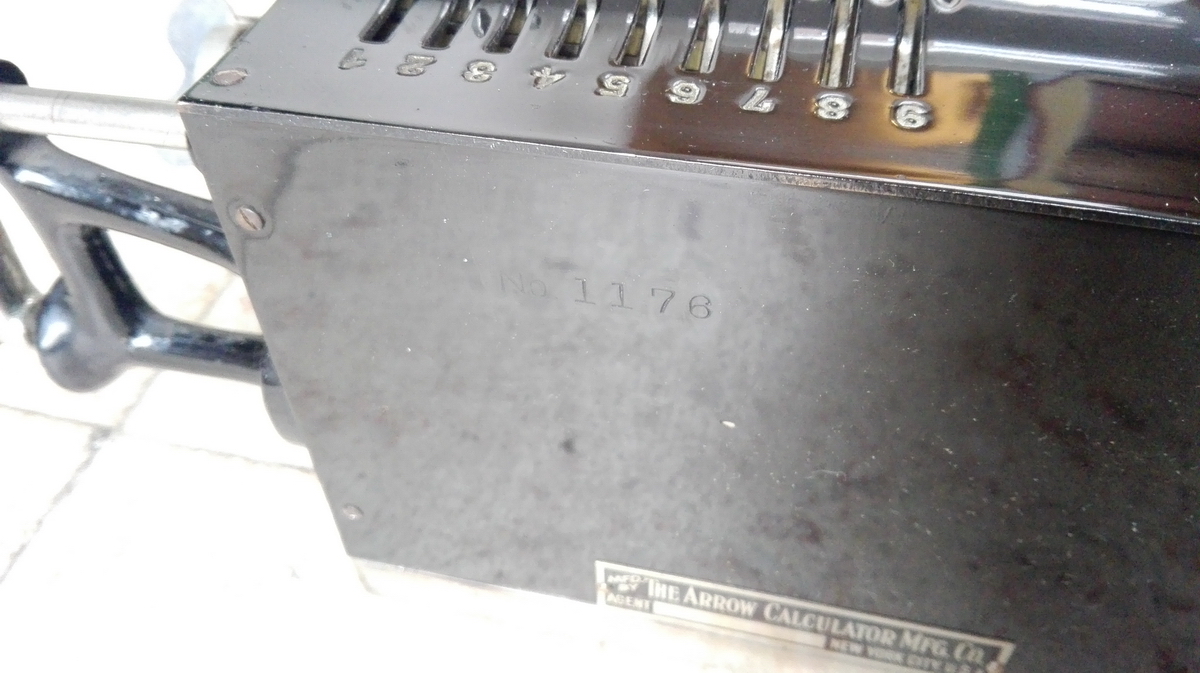
And manufacturer plate:
